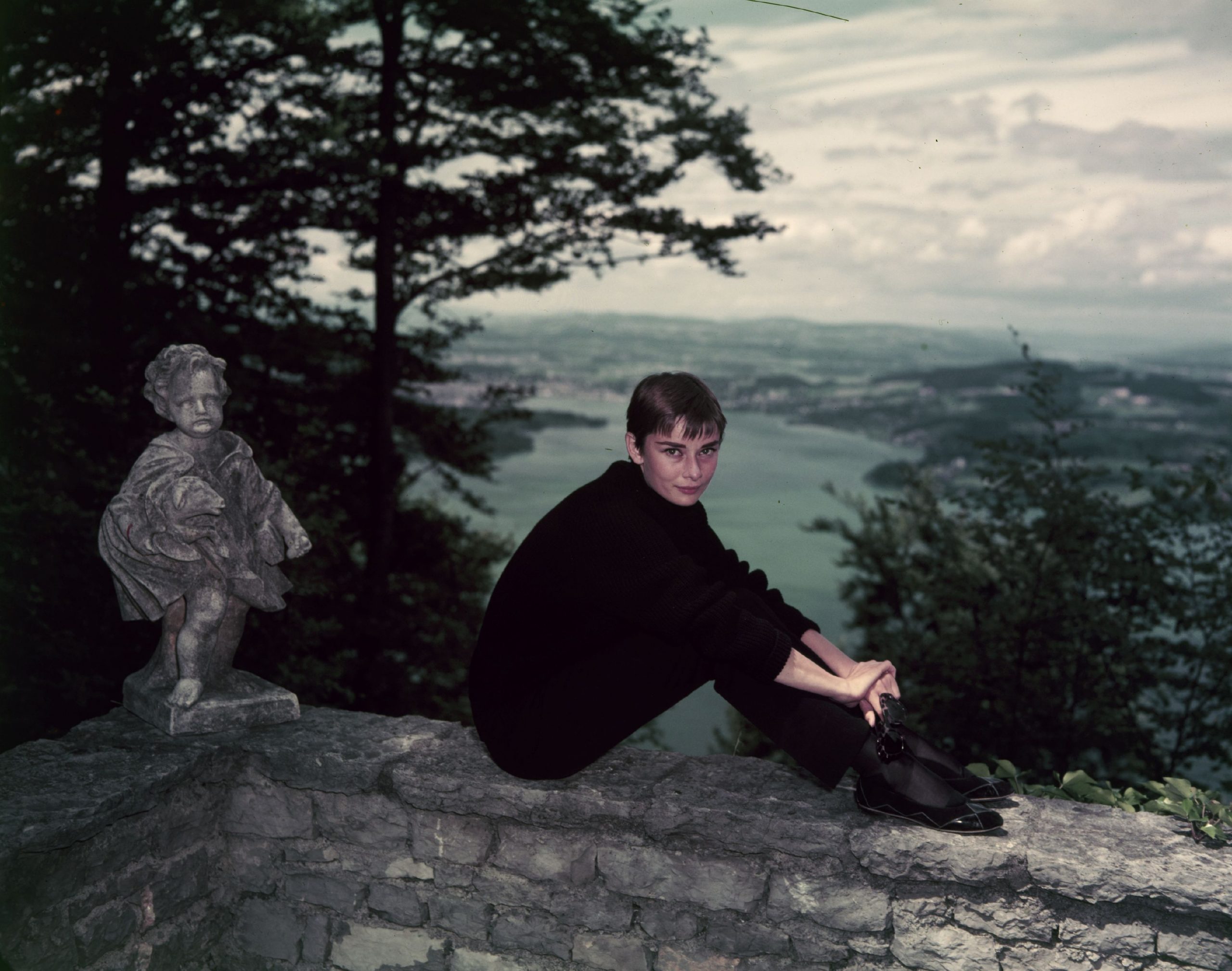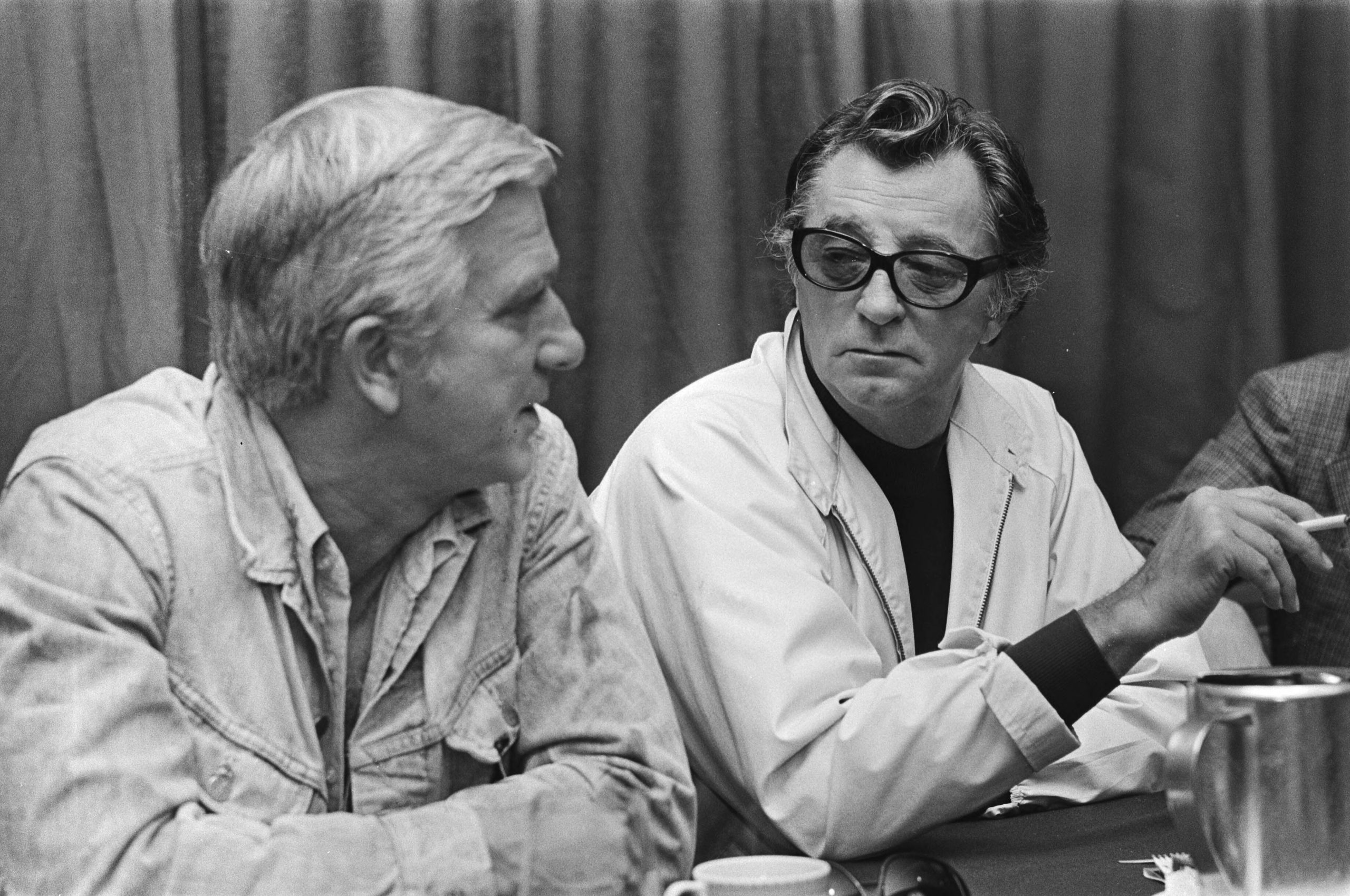No other Hollywood actor could portray biblical roles with such conviction as Charlton Heston: Heston’s role of Moses in The Ten Commandments (1956), directed by Cecil B. DeMille, was Heston’s breakthrough as a Hollywood actor. It was one of the last directorial efforts of the old master Cecil B. DeMille, who was instrumental in building Hollywood with actors like Gloria Swanson. Heston had already starred in DeMille’s previous film, The Greatest Show on Earth (1952): For DeMille, Heston was the perfect casting in the biblical role of Moses. The role type of the biblical protagonist had not yet existed in Hollywood in this form – thus Heston defined his own role genre.
Charlton Heston could not be assigned to any acting movement – neither did he feel committed to method acting, which was made famous by representatives such as James Dean and Marlon Brando, nor did he feel connected to traditional acting methods. He followed his own method – and did so successfully.
He was forced to leave behind the carefree world of his childhood, in which he could experience every imaginable adventure with his father.
A free childhood – and then suddenly over
Charlton Heston spent his early years in the remote woods of Michigan – his early childhood consisted mainly of spending the night by the campfire, catching fish and losing himself in the works of world literature.
When Heston was ten years old, his parents separated: From then on, Heston was separated from his father. Later, Heston described this experience as a trauma: he was forced to leave behind the carefree world of his childhood, in which he could experience every imaginable adventure with his father.
Together with his mother and her new husband, Heston travelled across the United States – it was the time of the Great Depression, thus it was anything but easy to find a job and a permanent place to stay.
Eventually, the family settled in an area a few miles north of the big city of Chicago. While attending high school there, Charlton Heston discovered his talent for acting.
Off to New York
The experience he gained as an amateur actor at high school predestined Charlton Heston for a scholarship to the coveted and renowned Northwestern University.
While he was a student, he played his first film role in the adventure film Peer Gynt (1941). It was directed by fellow student David Bradley.
After his acting training, Charlton Heston went to New York: at that time, unknown actors who did not want to end up with extra roles in Hollywood tried to get an engagement on Broadway in New York.
Charlton Heston’s Broadway debut set the course for his future career: In William Shakespeare’s Antony and Cleopatra, Heston played a supporting role in 1947. His work on Broadway led to numerous engagements in live television, which was flourishing in New York in the early fifties.
Heston was initially happy playing on Broadway and live television – starring in movies was not in his interest at first. When Hollywood became interested in hiring Heston for a few films, he only agreed when they gave him the opportunity to continue acting on the stage.
Ben Hur – Signature Role
Directed by the German-American film director Wilhelm Dieterle, Charlton Heston made his Hollywood debut in 1950 in the crime film Dark City – in the leading role.
With this role, Heston impressed director Cecil B. DeMille, who eventually hired him for two of his last films, including the monumental epic The Ten Commandments.
With the epic The Ten Commandments, Charlton Heston had risen to Hollywood stardom: The Fifties were a golden decade for Heston. His golden decade culminated in 1959 when he played the lead role of Judah Ben-Hur in the monumental film Ben-Hur.
The film won eleven Academy Awards – including one for Charlton Heston for his role as Ben Hur. The biblical epic is one of Charlton Heston’s signature roles: Along with The Ten Commandments, Ben-Hur is one of Heston’s best-known films.
Larger-than-life roles
The Italian-American monumental flick El Cid (1961) tells the story of the Spanish mercenary leader of the same name: Charlton Heston played the role of El Cid alongside Sophia Loren. In the fifties and sixties, the name Charlton Heston was synonymous with monumental productions – many directors and producers tended to cast Heston in larger-than-life roles.
In the war film 55 Days at Peking (1963), which dealt with the Boxer Rebellion at the turn of the century 1899/1900, Heston starred as Major Matt Lewis alongside David Niven and Ava Gardner.
Charlton Heston did not shy away from the Western genre either: in the Westerns The Big Country (1958) and Will Penny (1968), Heston showed that he could not be reduced to one genre.
Renaissance of the science fiction genre
He showed that he was a genre-crossing actor at the latest with his role of George Taylor in Planet of the Apes (1968). Heston is credited with sparking a renaissance of the science fiction genre with his role. This renaissance was expressed not least by the fact that several Planet of the Apes sequels were made in the following years. The success of Planet of the Apes is said to have been a great surprise to everyone involved: This may have been due in no small part to the drawing power of Charlton Heston as the lead actor, whose sheer participation was now enough to turn a film into a monumental production – even though the film was not actually a monumental production. One thing is certain: with Planet of the Apes at the latest, science fiction films got rid of the prejudice that they belonged in the B-movie category. Moreover, with Planet of the Apes, Heston won a new, younger target group for himself: previously, younger viewers had shown little interest in his interpretations of biblical or historical figures. This had changed now.
There have been many monumental productions in the history of Hollywood – but only a few monumental actors.
The monumental actor
The screen career of Charlton Heston is without question one of the most extensive in the history of Hollywood: although he was not necessarily enthusiastic about acting in films at the beginning of his career, he found his way in Hollywood. At the beginning of his career, when live staged plays were televised, a television career was still a real alternative: later Heston was glad to have concentrated on his screen career.
For roles with a biblical touch, Heston seemed predestined like no other – although he entered the collective memory with the role of Moses or Ben Hur, these are by no means the only roles he played with heart and soul. He could slip into an overwhelming variety of role types. Many of the films he starred in may only have in common that they were large-scale monumental productions.
There have been many monumental productions in the history of Hollywood – but only a few monumental actors. Charlton Heston could count himself among them without question.
Main source: Eliot, Marc: Charlton Heston – Hollywood’s Last Icon, 2017 Dey Street Books
Cover picture: © Simon von Ludwig

 Deutsch
Deutsch











